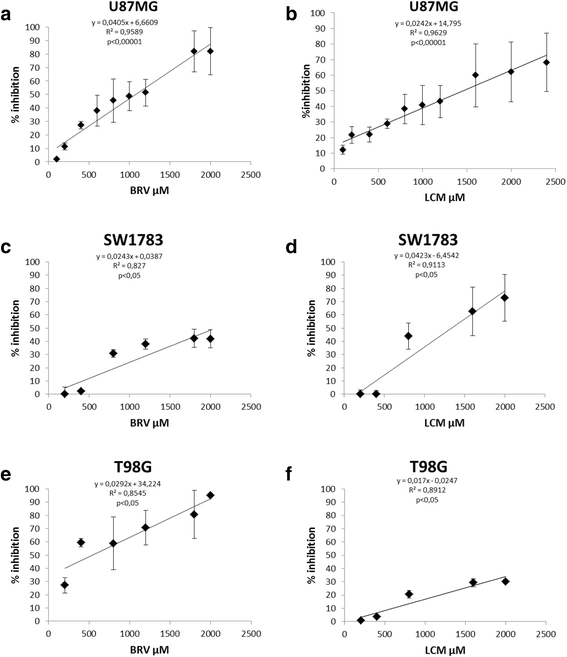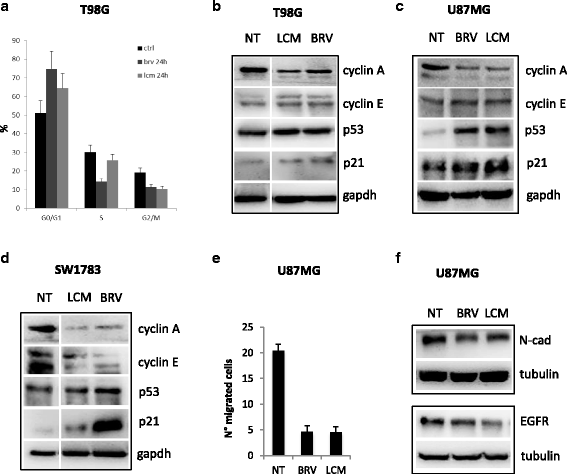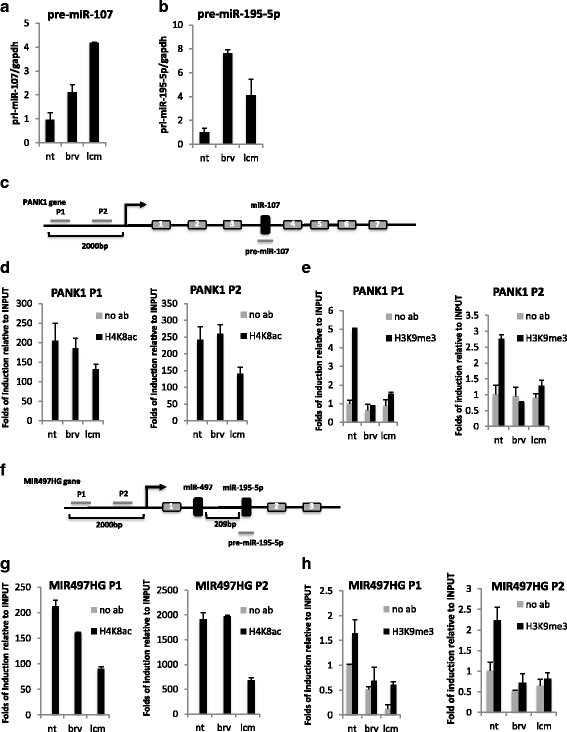In vitro antineoplastic effects of brivaracetam and lacosamide on human glioma cells
- PMID: 28587680
- PMCID: PMC5460451
- DOI: 10.1186/s13046-017-0546-9
In vitro antineoplastic effects of brivaracetam and lacosamide on human glioma cells
Abstract
Background: Epilepsy is a frequent symptom in patients with glioma. Although treatment with antiepileptic drugs is generally effective in controlling seizures, drug-resistant patients are not uncommon. Multidrug resistance proteins (MRPs) and P-gp are over-represented in brain tissue of patients with drug-resistant epilepsy, suggesting their involvement in the clearance of antiepileptic medications. In addition to their anticonvulsant action, some drugs have been documented for cytotoxic effects. Aim of this study was to evaluate possible in vitro cytotoxic effects of two new-generation antiepileptic drugs on a human glioma cell line U87MG.
Methods: Cytotoxicity of brivaracetam and lacosamide was tested on U87MG, SW1783 and T98G by MTS assay. Expression of chemoresistance molecules was evaluated using flow cytometry in U87MG and human umbilical vein endothelial cells (HUVECs). To investigate the putative anti-proliferative effect, apoptosis assay, microRNA expression profile and study of cell cycle were performed.
Results: Brivaracetam and lacosamide showed a dose-dependent cytotoxic and anti-migratory effects. Cytotoxicity was not related to apoptosis. The exposure of glioma cells to brivaracetam and lacosamide resulted in the modulation of several microRNAs; particularly, the effect of miR-195-5p modulation seemed to affect cell cycle, while miR-107 seemed to be implicated in the inhibition of cells migration. Moreover, brivaracetam and lacosamide treatment did not modulate the expression of chemoresistance-related molecules MRPs1-3-5, GSTπ, P-gp on U87MG and HUVECs.
Conclusion: Based on antineoplastic effect of brivaracetam and lacosamide on glioma cells, we assume that patients with glioma could benefit by the treatment with these two molecules, in addition to standard therapeutic options.
Keywords: Brain tumor-related epilepsy; Brivaracetam; Cytotoxicity; Glioma; Lacosamide.
Figures






Similar articles
-
Migration-prone glioma cells show curcumin resistance associated with enhanced expression of miR-21 and invasion/anti-apoptosis-related proteins.Oncotarget. 2015 Nov 10;6(35):37770-81. doi: 10.18632/oncotarget.6092. Oncotarget. 2015. PMID: 26473373 Free PMC article.
-
miR-423-5p contributes to a malignant phenotype and temozolomide chemoresistance in glioblastomas.Neuro Oncol. 2017 Jan;19(1):55-65. doi: 10.1093/neuonc/now129. Epub 2016 Jul 28. Neuro Oncol. 2017. PMID: 27471108 Free PMC article.
-
Knockdown of microRNA-127 reverses adriamycin resistance via cell cycle arrest and apoptosis sensitization in adriamycin-resistant human glioma cells.Int J Clin Exp Pathol. 2015 Jun 1;8(6):6107-16. eCollection 2015. Int J Clin Exp Pathol. 2015. PMID: 26261488 Free PMC article.
-
What is the promise of new antiepileptic drugs in status epilepticus? Focus on brivaracetam, carisbamate, lacosamide, NS-1209, and topiramate.Epilepsia. 2009 Dec;50 Suppl 12:49-50. doi: 10.1111/j.1528-1167.2009.02366.x. Epilepsia. 2009. PMID: 19941524 Review. No abstract available.
-
Brivaracetam for the treatment of epilepsy.Expert Opin Pharmacother. 2016;17(2):283-95. doi: 10.1517/14656566.2016.1135129. Epub 2016 Jan 13. Expert Opin Pharmacother. 2016. PMID: 26760311 Review.
Cited by
-
Efflux dynamics of the antiseizure drug, levetiracetam, through the P-glycoprotein channel revealed by advanced comparative molecular simulations.Sci Rep. 2022 Aug 11;12(1):13674. doi: 10.1038/s41598-022-17994-3. Sci Rep. 2022. PMID: 35953704 Free PMC article.
-
Long non‑coding RNA LINC00473/miR‑195‑5p promotes glioma progression via YAP1‑TEAD1‑Hippo signaling.Int J Oncol. 2020 Feb;56(2):508-521. doi: 10.3892/ijo.2019.4946. Epub 2019 Dec 18. Int J Oncol. 2020. PMID: 31894297 Free PMC article.
-
[Epilepsy in cancer patients: primary prevention and the importance of high-risk patient screening].Rev Neurol. 2022 Dec 1;75(11):349-356. doi: 10.33588/rn.7511.2022200. Rev Neurol. 2022. PMID: 36440747 Free PMC article. Review. Spanish.
-
Hsa_circ_0021205 enhances lipolysis via regulating miR-195-5p/HSL axis and drives malignant progression of glioblastoma.Cell Death Discov. 2024 Feb 10;10(1):71. doi: 10.1038/s41420-024-01841-7. Cell Death Discov. 2024. PMID: 38341418 Free PMC article.
-
Brivaracetam in the treatment of epilepsy: a review of clinical trial data.Neuropsychiatr Dis Treat. 2019 Sep 9;15:2587-2600. doi: 10.2147/NDT.S143548. eCollection 2019. Neuropsychiatr Dis Treat. 2019. PMID: 31571877 Free PMC article.
References
-
- Gustavsson A, Svensson M, Jacobi F, Allgulander C, Alonso J, Beghi E, Dodel R, Ekman M, Faravelli C, Fratiglioni L, Gannon B, Jones DH, Jennum P, Jordanova A, Jonsson L, Karampampa K, et al. Cost of disorders of the brain in Europe 2010. Eur Neuropsychopharmacol. 2011;21(10):718–79. doi: 10.1016/j.euroneuro.2011.08.008. - DOI - PubMed
MeSH terms
Substances
LinkOut - more resources
Full Text Sources
Other Literature Sources
Miscellaneous

